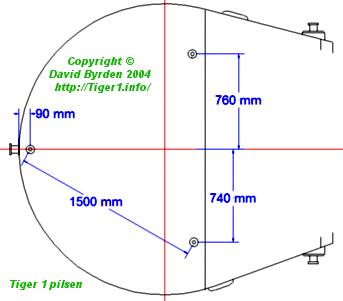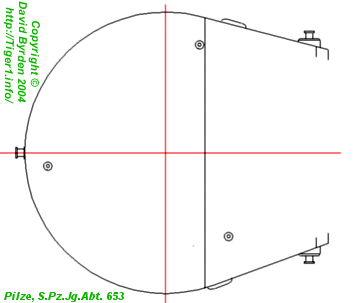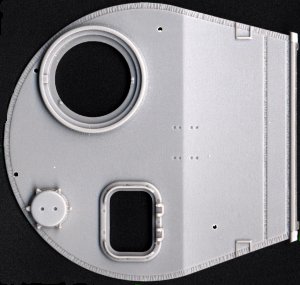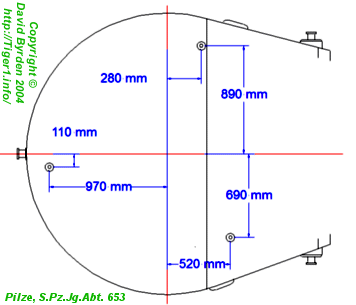About this detail of the Tiger
The parts of tanks tend to be very heavy, often too much so to be lifted manually. In 1944, the Panzer troops were issued with a small, portable crane, the 'Behelftskran', with a capacity of 2 tonnes ([1] page 82). To allow this crane to be mounted, three metal sockets ('Pilze') per were welded to the roofs of vehicles. The feet of the crane screwed into these sockets.
The Tiger 1 carried these sockets from June 1944. We are fortunate to have the factory drawings that show where to weld them. All three sockets were 1500mm apart. The rear one was on the turret center line, and as you can see in the following diagram, the forward ones were very slightly off-center.

Saúl Garcia has noticed something interesting in photographs of the command vehicle of S.Pz.Jg.Abt. 653. It has very clearly got three sockets on the roof! ([2] page 372) I don't know whether they were fitted when the vehicle was prepared for front-line service, or afterwards. What is obvious is that they are not in the standard positions.
The rear socket is NOT on the center line. I believe the next diagram shows the approximate positions of the sockets:

As you can see, I place the sockets in slightly different places to what you will find in the Dragon kit of this vehicle. Thanks to Ed Kusiak for the following scan:

I will explain how I came to this conclusion. We can locate the front left socket fairly accurately; it's visible in two photos. I'm sure that Dragon's one is well off position. The other sockets are more difficult to locate, but by aligning with the cupola I confirmed that Dragon misplaced the rear one. Then I made the assumption that the sockets were placed at equal distances (the designers took the trouble to do that on the normal Tiger 1). Measuring very carefully from the photographs, I believe that the distance on this vehicle is 1600mm. That lets me place the third socket.

[1] DW to Tiger 1